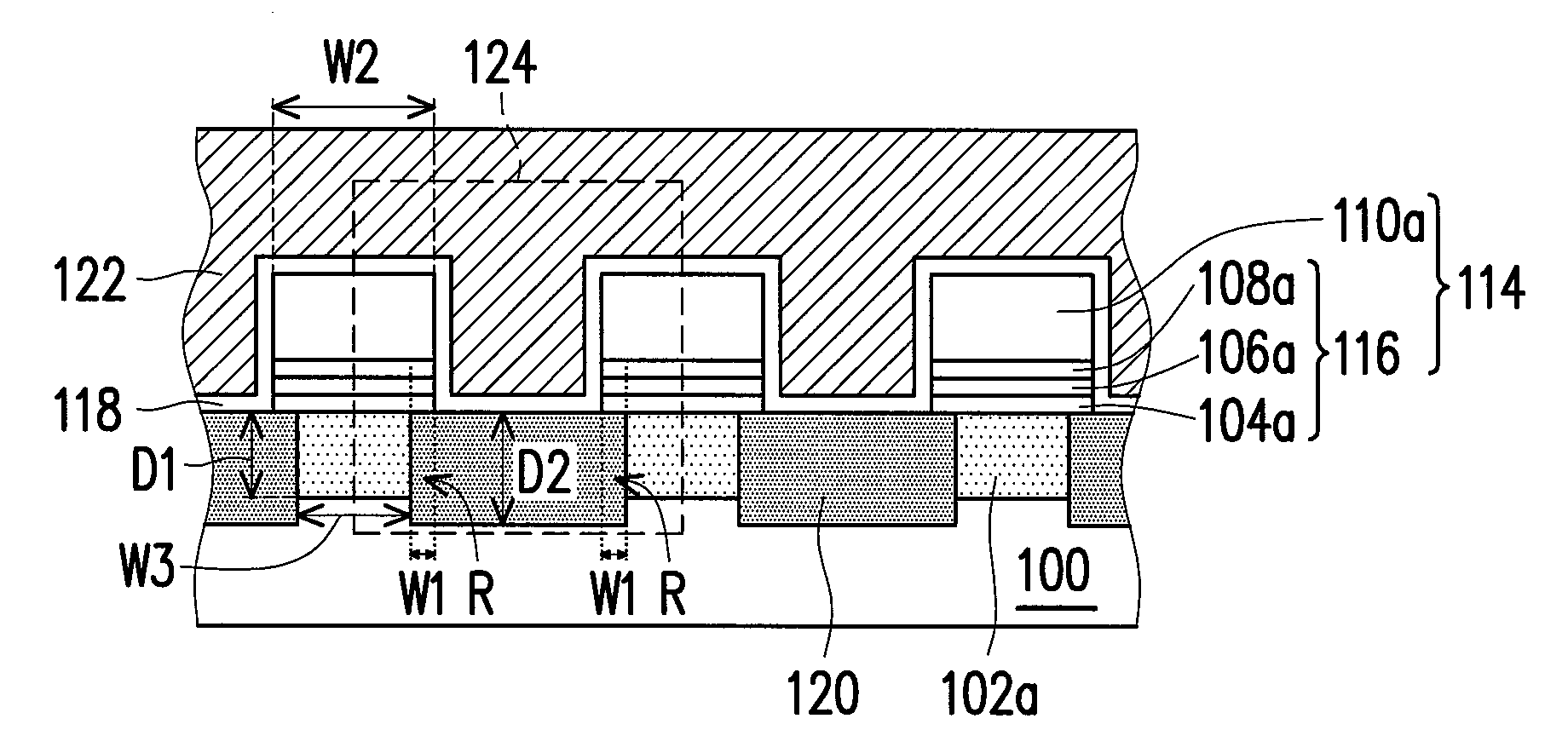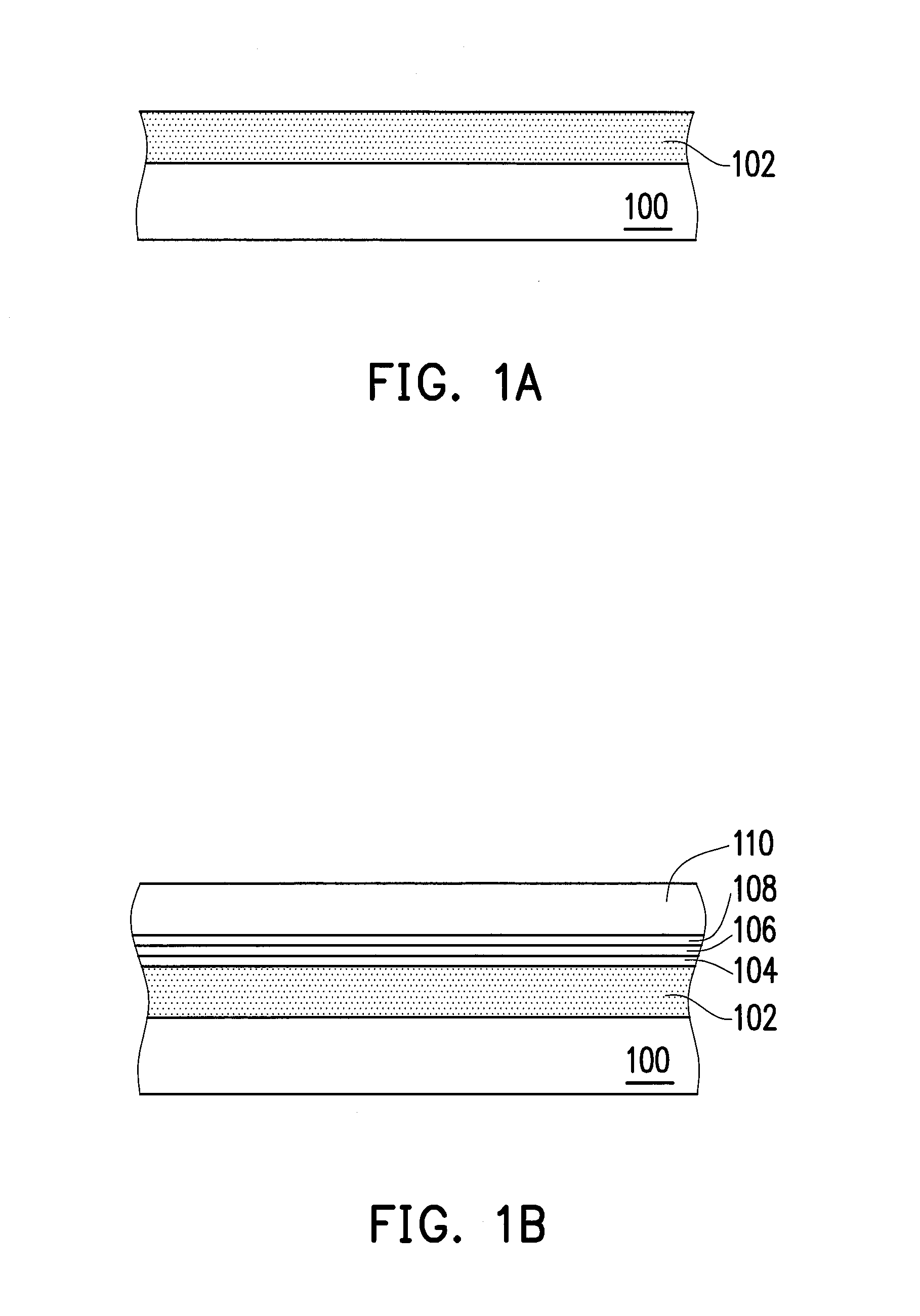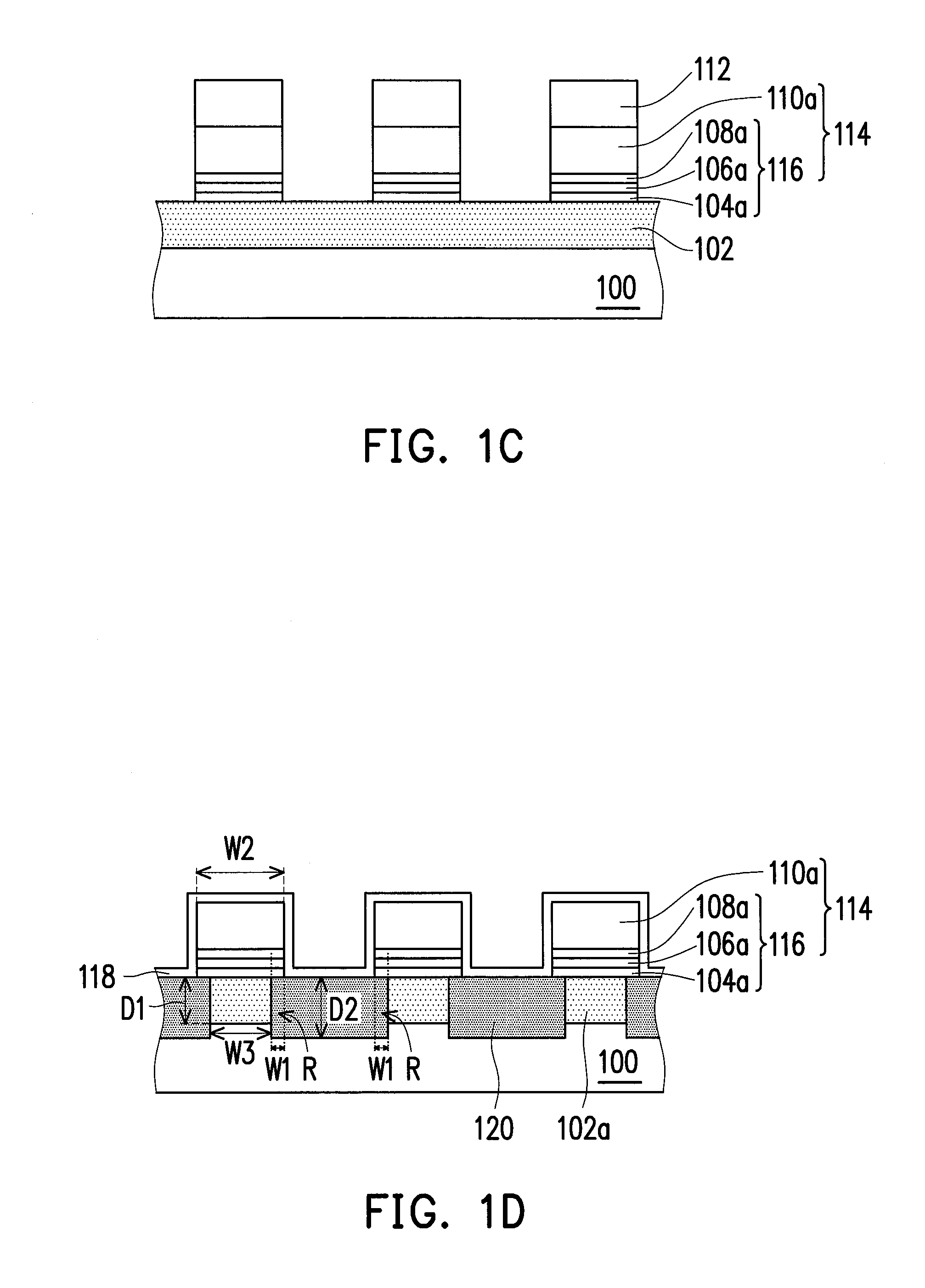Fabricating method of non-volatile memory structure
- Summary
- Abstract
- Description
- Claims
- Application Information
AI Technical Summary
Benefits of technology
Problems solved by technology
Method used
Image
Examples
Embodiment Construction
[0035]FIGS. 1A-1E are schematic cross-sectional views illustrating steps of fabricating a non-volatile memory structure according to an embodiment of the invention.
[0036]First, referring to FIG. 1A, a first conductive type doped layer 102 is formed in a substrate 100. The substrate 100 is, for example, a silicon substrate. The first conductive type doped layer 102 may be an N-type doped region or a P-type doped region. A dopant concentration of the first conductive type doped layer 102 is in a range of 1 e18cm−3 to 1 e21cm−3 for example. A dopant depth of the first conductive type doped layer 102 is in a range of 300 Å to 1000 Å, for example. A method for forming the first conductive type doped layer 102 includes an ion implantation method, for example. In this embodiment, the first conductive type doped layer 102 is the N-type doped region, for example, and a dopant used in this embodiment is an N-type dopant, such as As or P.
[0037]Then, referring to FIG. 1B, a dielectric material ...
PUM
 Login to View More
Login to View More Abstract
Description
Claims
Application Information
 Login to View More
Login to View More - R&D
- Intellectual Property
- Life Sciences
- Materials
- Tech Scout
- Unparalleled Data Quality
- Higher Quality Content
- 60% Fewer Hallucinations
Browse by: Latest US Patents, China's latest patents, Technical Efficacy Thesaurus, Application Domain, Technology Topic, Popular Technical Reports.
© 2025 PatSnap. All rights reserved.Legal|Privacy policy|Modern Slavery Act Transparency Statement|Sitemap|About US| Contact US: help@patsnap.com



